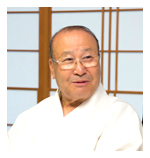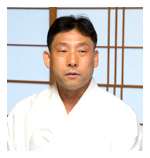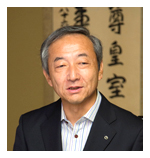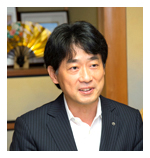Dialogue The Global Environment Protection Activities of NTT West Group and Its Role in the Regional Community
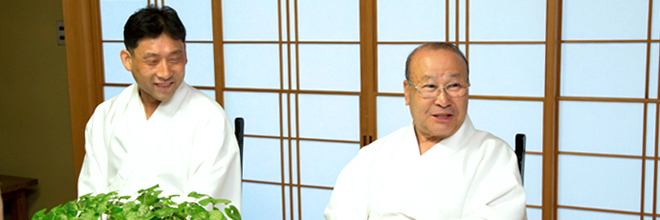
[Activities and Endeavors of NTT West Kyoto Branch]
- MC:
The network of NTT West Group extends across 30 prefectures in western Japan, with each branch engaging in corporate activities that are closely tied to the local community. In the case of Kyoto Branch, what are the other efforts and activities besides hollyhock planting?
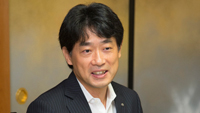
- Sasaki:
Kyoto is a popular spot for foreign visitors too, and we have received a lot of requests to enhance our services such as free Wi-Fi. In the recent few years, we have been pushing support for the construction and operation works and have installed access points at a large number of locations in Kyoto Prefecture. This service is called "Kansai Free Wi-Fi" (offered by Union of Kansai Governments and Kansai Economic Federation). For example, upon arriving in Japan at the Kansai International Airport, the user simply needs to access the Internet once and s/he can continue using the service even after moving to another city such as Osaka, Kyoto or Kobe.
Also, Kyoto Prefecture is a student hub with students accounting for 6% of the population (as of December 2016). Lately, students have been utilizing PCs and the Internet for watching movies as part of the preparation for their reports and makeup classes. Optical fiber network comes in handy for this purpose due to the need to send and receive large files and bulky movie data. In view of this need, we are in the process of preparing for the provision of optical fiber network for the entire apartment building so that more students can get to utilize it.
[Global Environment Protection Activities of NTT West Group]
- MC:
Next, I would like you to share with us about the efforts of NTT West Group in global environment protection activities.

- Hara (Section Manager):
The staff strength of the entire NTT Group is 270,000, among which about 55,000 are employees of NTT West and its group companies. We have branches in 30 prefectures, and are consuming a considerable quantity of electric power, equipment and materials for our wide scale of operations, which imposes a heavy burden on the global environment.
NTT West Group accounts for approximately 0.3% of the total CO2 emission in Japan, and uses up the amount of electricity required by an average household in a week in one second. As part of our corporate social responsibility, we have established the "NTT West Group Charter for Global Environment" with the aim to reduce the environmental load.
Specifically, we have set the three goals below to achieve by 2020.
1. "Achievement of the Environmental Grand Design" - to aim at the reduction of paper use, wastes and power consumption.
2. Endeavor to contribute to the global environment through the "expansion of environmental and energy businesses."
3. "Promotion of biodiversity conservation activities" - contribution by each and every employee to the local community as well as protection of the natural environment, which includes the planting event held today.
For 1, we have already achieved the goal before 2020 except for the reduction of power consumption.
- MC:
I am sure the goal can be achieved because each and every of the tens of thousands of employees makes a conscious effort to think about how CO2 emission can be reduced and how to prevent wastage of limited resources.
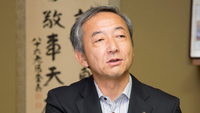
- Kuroda:
A large amount of power is consumed with the operation of machines at our telephone exchange. NTT Group accounts for about 1% of the total power consumption in Japan. Since this is a considerably heavy load on the environment, we are forced to think about how we can reduce power consumption, regardless of how little it may be. Yet another issue to address is the recycling of unwanted items, which range from facilities to every single cable that we use. Each of our group companies engages in efforts such as those to reduce power consumption and wastes as well as to enhance the recycling rate by setting targets based on the fundamental thought "to prevent further destruction of the environment."
- MC:
If each of the 55,000 employees bears in mind to save a single piece of paper, that will lead to saving of 55,000 pieces of paper.
The effort of an individual might be negligible, but the collective effort of the entire company has a strong impact.
[Direction for the Future Activities of NTT West Group]
The importance of environmental protection is being called upon more than ever in the modern society. Are there any particular points to keep in mind when engaging in these efforts at NTT West Group?
- Kuroda:
We are a company with a size of 55,000 employees, so it is vital that our employees engage in the activities while being conscious of the fact that they can make significant contributions to the society and environment on a wide scale if each of them were to take action. This in turn helps to enhance the corporate strength. Besides efforts to reduce power consumption, paper use and waste, each of our branches also engages in activities similar to the "Midori Ippai Project" activity today.
- Tanaka:
That is a wonderful thing.
The efforts of NTT West Group to protect the natural environment reflect the unchanging values of the Japanese since early times.
- Inui:
One of the theories on the decline of hollyhocks is that the amount of moist land is decreasing following climate change, so we are able to carry on with the Kamo Festival (Aoi Festival) thanks to the support of planting activities like this one. We hope that such efforts will spread widely across the society so that we can continue to hold the Kamo Festival, which has been passed down since 1450 years.
[Remarks after the Dialogue]
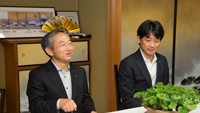
- Kuroda:
Although the environment is changing and things might not be the same as before, through this session I am more convinced that we should put our brains together and devote our effort to conserving the environment in future. I hope that the flourish of festivals and shrines will lead to our growth and prosperity.
- Sasaki:
It allowed me to learn more about the history, nature and plants, and heightened my desire to take good care of hollyhocks as well as to enliven the longstanding festival together with everyone. To gain the sympathy and support of many people, NTT West Group employees will take the initiative to engage in related activities while spreading information at the same time. I hope we can transform into a society where everyone in Japan can engage actively in the conservation of the global environment with the same feeling.
- Tanaka:
We started to get support from the private sector on the hollyhock planting activities since seven years ago, and NTT West Group was the first to provide their support. I'm also glad to see participants taking part in the event with their family. It would be great if the participants are able to pass down stories to their descendants on how the hollyhocks they planted when they were still young were used for decoration at the Kamo Festival.

- Inui:
Unlike the Gion Festival, which involves a large group of public participants, Kamo Festival (Aoi Festival) used to be run by the country and was a festival for the officials that was not really open to participation by the common people. Children of the local communities who took part in making the ""Aoi Kazura (hollyhock wig)"" using the hollyhocks and decorating them in the precincts of the shrine during this planting event told me that they were glad and proud to be able to participate in the Aoi Festival in this way.
They were also able to learn the historical background at the ""Afuhi Summit"" and share the knowledge with elementary school students of other regions. We look forward to your continued support in order to groom the younger generation into the future leaders of the society.
- MC:
Thank you everyone for your time today.
[Profile of Dialogue Participants]

